Streaming platforms don’t use the same loudness standards. That’s why your song might sound too quiet on Apple Music but too loud on Spotify. It can be confusing, especially if you’re new to mastering. The solution is to learn how loudness standards work and how to measure them using LUFS. LUFS tells you how loud your track really is. Once you understand it, you can make your music sound right on every platform.
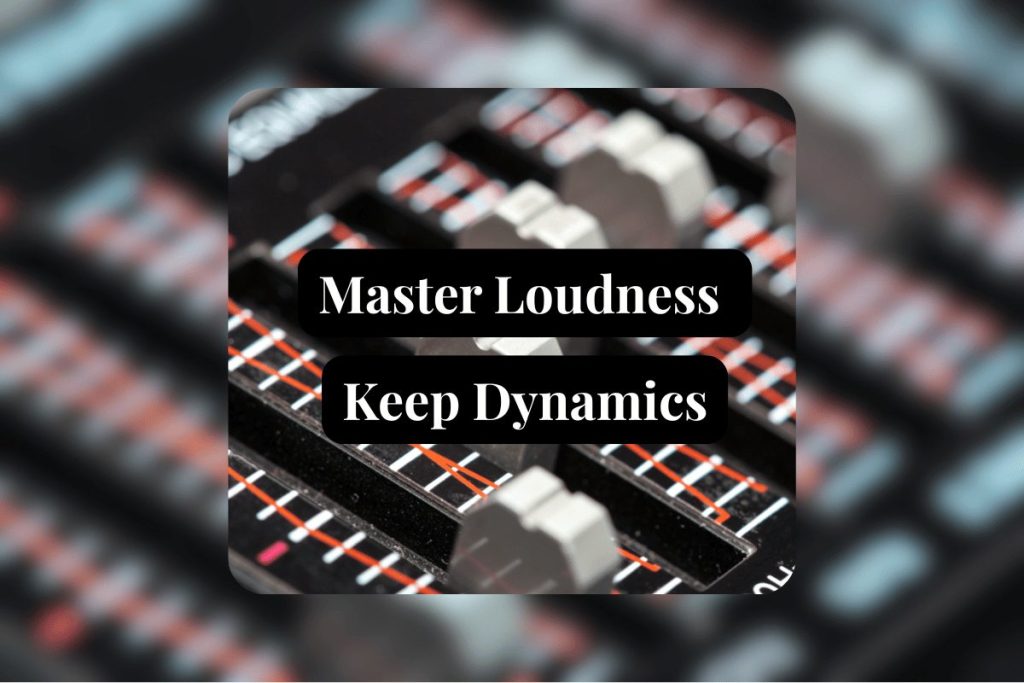
This guide explains how streaming platforms handle loudness, and how to master your tracks to sound balanced everywhere without losing dynamics.
Table of Contents:
Why Loudness Standards Are Critical in Music Streaming
Do You Need a Different Master for Every Platform?
What Is the Loudness War and Why Musicians Are Moving Away from It
How Platforms Handle Compression and Loudness?
How to Master Audio without Killing the Dynamics
Why Loudness Standards Are Critical in Music Streaming
Every Platform Adjusts Your Track’s Volume
When you upload a song to Spotify, YouTube, or Apple Music, they don’t play it exactly as you made it. These platforms utilize a process known as audio normalization. It adjusts the loudness of every track to match a target level. This helps listeners avoid jumping from a quiet song to a loud one. But it can mess with your mix if you’re not prepared.
Why You Should Care
If you ignore loudness standards, your song might lose energy or sound dull. Worse still, you may experience distortion on certain platforms. However, if you consider these standards, your track will sound balanced and clear everywhere.
Following loudness standards means your listeners hear your music the way you intended on any platform, at any time.
Do You Need a Different Master for Every Platform?
This is one of the most common questions musicians ask. With every platform using different loudness standards, it seems like you’d need a different version of your master for each one. But in most cases, you don’t.
Most streaming platforms normalize your track’s volume to their target level. That means even if your song is louder or quieter than the target LUFS, the platform will adjust it. So, making separate masters usually isn’t necessary unless your music is being released in a special format like vinyl, film, or broadcast.
Instead of chasing different LUFS levels for each service, it’s better to pick one balanced level. Many engineers use -14 LUFS Integrated. It’s right in the middle and works well for Spotify, YouTube, Tidal, and more. Apple Music is a bit lower at -16 LUFS, but it still plays a -14 LUFS track cleanly.
What Is the Loudness War and Why Musicians Are Moving Away from It
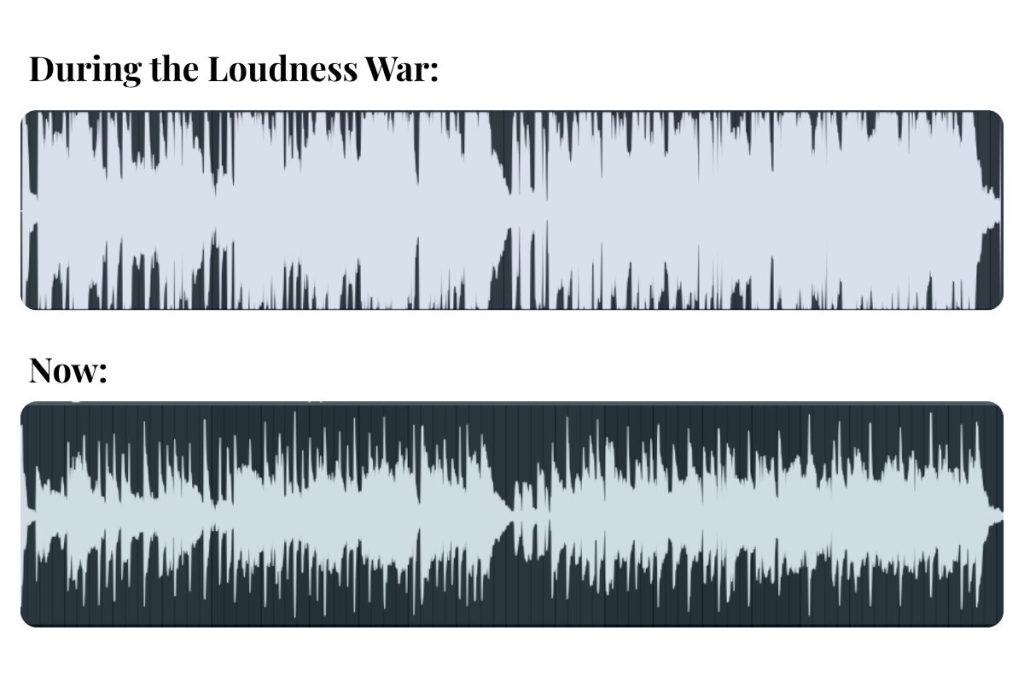
The loudness war started decades ago when artists and labels competed to make their songs louder than everyone else’s. The idea was simple: louder tracks grab attention. But louder doesn’t always mean better.
To achieve extreme loudness, producers began using aggressive compression and limiting. This crushed the loudness range, the difference between the softest and loudest parts of a song. Music started to lose its punch, space, and emotional impact.
Listeners and platforms noticed. Loud tracks often sounded harsh or distorted, especially on headphones or phone speakers. Streaming services started using audio normalization with LUFS to keep song volumes consistent.
Now, musicians are stepping back from the loudness war. Instead of chasing volume, they focus on preserving dynamics and clarity. A well-balanced master is more enjoyable and survives platform compression better.
How Platforms Handle Compression and Loudness
Streaming platforms want to give listeners a consistent experience. To do that, they adjust the loudness of each track to meet a set target. This process is called loudness normalization. It keeps the volume steady so listeners don’t have to turn it up or down between songs.
Understanding Loudness Normalization
Loudness normalization changes the volume of a track to match the platform’s target level. This level is measured in LUFS (Loudness Units Full Scale). If a track is too loud, the platform turns it down. If it’s too quiet, some platforms turn it up but not all do.
Platform-Specific Approaches
- Spotify: Normalizes tracks to -14 LUFS by default. Louder tracks are turned down, while quieter ones are turned up, provided their peak levels allow it. Spotify also offers user-selectable normalization levels at -11 and -19 LUFS. Read More.
- Apple Music: Uses Sound Check to normalize tracks to approximately -16 LUFS. It adjusts loud and quiet tracks to match the target level without causing distortion.
- YouTube: Normalizes audio to around -14 LUFS but only reduces the volume of tracks that exceed this level. Quieter tracks remain unchanged, which can result in noticeable volume differences.
- Amazon Music: Targets approximately -14 LUFS. It reduces the volume of louder tracks but doesn’t increase the volume of quieter ones.
- Tidal: Normalizes tracks to -14 LUFS and applies album normalization, adjusting the entire album uniformly rather than individual tracks.
- Deezer: Aims for around -15 LUFS and primarily reduces the volume of tracks that exceed this level. Read More.
- Pandora: Normalizes to approximately -13 to -14 LUFS, adjusting both louder and quieter tracks to meet the target level.
Compression and Its Impact
Normalization adjusts the overall volume. Compression controls the dynamic range, which refers to the gap between loudest and softest parts of a track.
Too much compression can make a track sound flat and lifeless. It removes the natural dynamics that give music emotion and movement. Too little compression can make a track feel weak or unclear, especially in busy mixes.
It’s important to find the right balance. Use enough compression to bring clarity and presence. But don’t overdo it, or you’ll lose the energy and depth in your music.
How to Master Audio without Killing the Dynamics
Target Safe LUFS: Between -14 and -16 Integrated
Different streaming platforms use different LUFS targets, but they’re all pretty close. Most hover between -14 and -16 LUFS Integrated.
This range gives you a “safe zone” where your music won’t be turned down too much—or worse, clipped. If you master at -14 LUFS, your track will sound just right on Spotify, YouTube, Amazon Music, and Tidal. Apple Music is slightly quieter at -16 LUFS, but your track will still sound clean there too.
Staying in this range helps you meet loudness standards without losing quality. It also keeps your mix dynamic, especially if you’re working with vocals or live instruments.
Avoid Clipping: Keep True Peak Below -1.0 dBTP
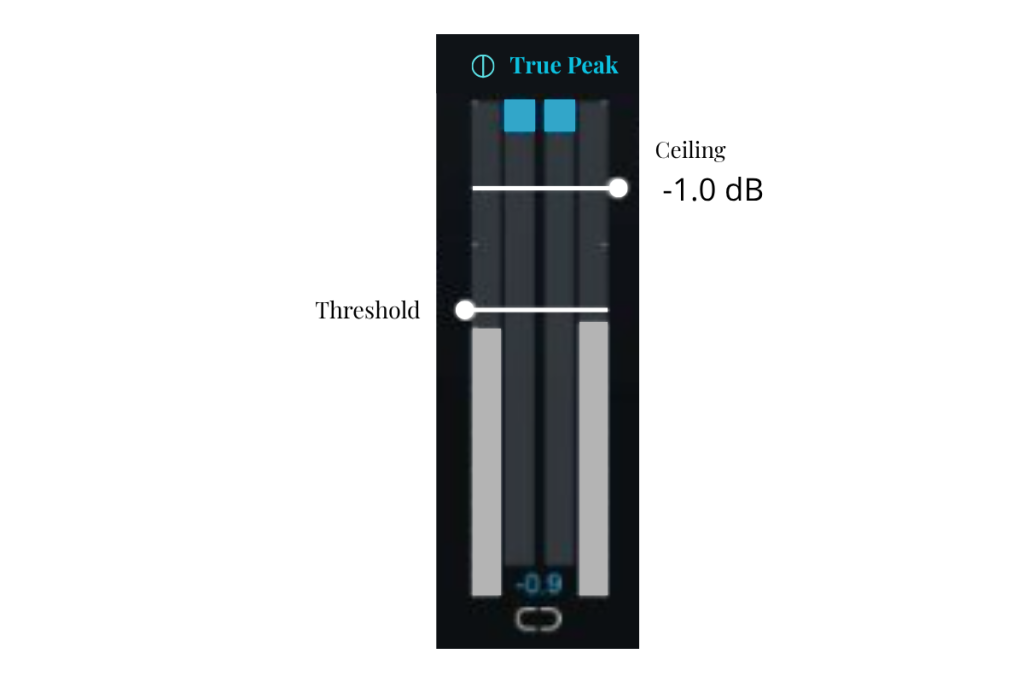
LUFS tells you how loud your track sounds overall, but true peak measures the actual peaks in your waveform—especially those between digital samples.
Most platforms recommend keeping your true peak below -1.0 dBTP. If it goes higher, encoding formats like AAC or MP3 may cause distortion during playback, especially on YouTube or older mobile devices.
It’s easy to check this. Use a loudness meter that shows both LUFS and true peak. If your peak level is close to 0 dB, dial back your limiter or output gain.
A clean, controlled peak means your track won’t distort when it hits the platform.
Use a Loudness Meter Before Export to Verify Compliance
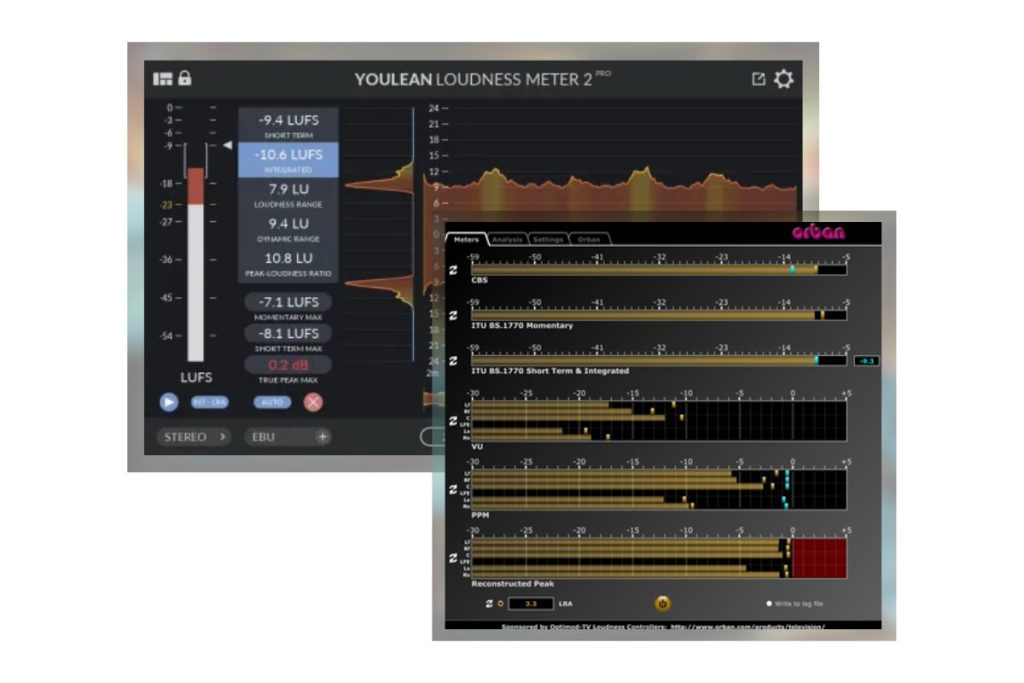
Before you bounce your final track, use a loudness meter to double-check your levels.
Tools like the Youlean Loudness Meter or Orban Loudness Meter give real-time LUFS, Integrated LUFS, and true peak readings. Most also show presets for major platforms like Spotify or Apple Music.
Let your track play from start to finish and note the Integrated LUFS. Also, check that your true peak is under -1.0 dBTP.
Even a quick check at the end can save your song from sounding off after upload.
Keep Dynamics in Check—Don’t Fear Being “Less Loud”
Many musicians worry that if their track isn’t loud, it won’t compete. But that’s not true anymore.
Because of loudness standards, platforms will turn down tracks that are too loud. But they rarely boost quiet ones by much, especially if it risks distortion. So, a balanced track with a healthy loudness range will often sound clearer and more detailed than a crushed one.
Don’t squash your track just to hit a number. Focus on feel. A quiet, dynamic verse can make your chorus hit even harder.
In short, don’t fear “less loud.” Aim for clarity and emotion instead.
And Finally, Simplify It with Remasterify.
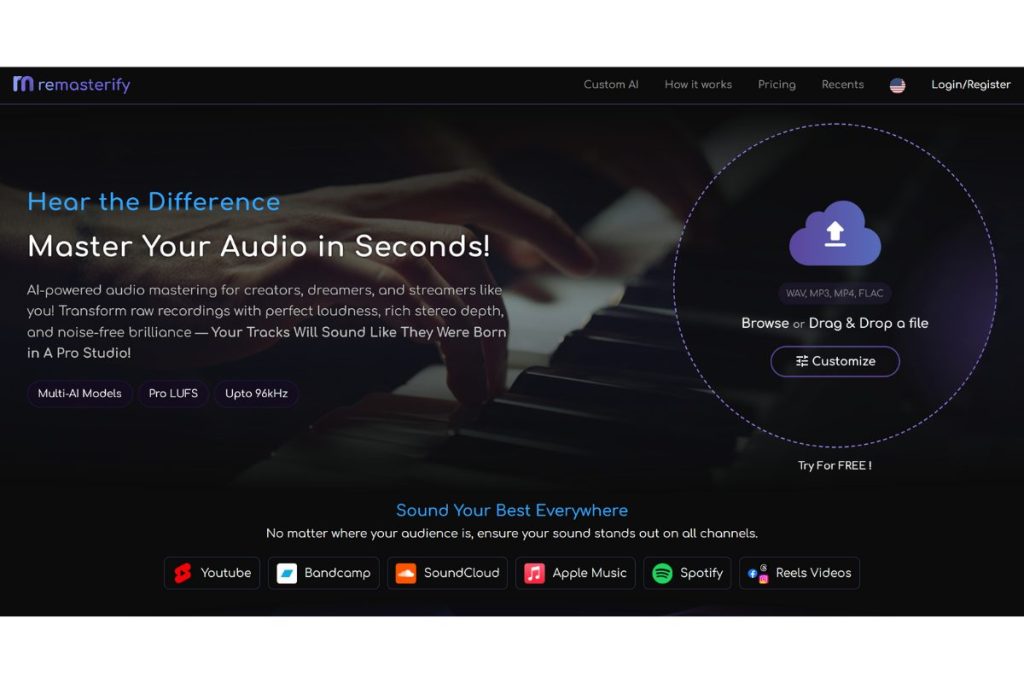
Mastering doesn’t have to be confusing. If you’re unsure about LUFS, true peaks, or compression settings, there’s a simple option.
Remasterify helps you upload and polish your songs without stress. It handles audio normalization, adjusts LUFS safely, and avoids clipping, giving you a professional sound that works across platforms.
Whether you’re a beginner or just in a hurry, tools like Remasterify let you focus on your music, not technical details.
Your listeners deserve to hear your best. And with the right help, you can deliver it consistently and confidently.
Conclusion
Mastering for streaming isn’t about chasing loudness, it’s about balance. With so many platforms using different loudness rules, understanding tools like LUFS and loudness meters gives you control. It helps your music sound clear and consistent, no matter where it’s played. Whether you’re working in a home studio or prepping tracks for a global release, the key is awareness. Know how platforms handle your audio, and adjust with purpose. You don’t need fancy gear—just a simple workflow and a focus on dynamics. When you master smart, your music connects better, and that’s what really matters in the end.
